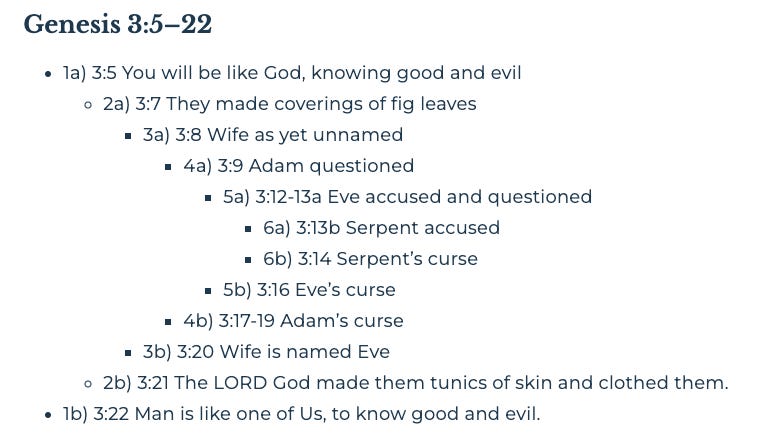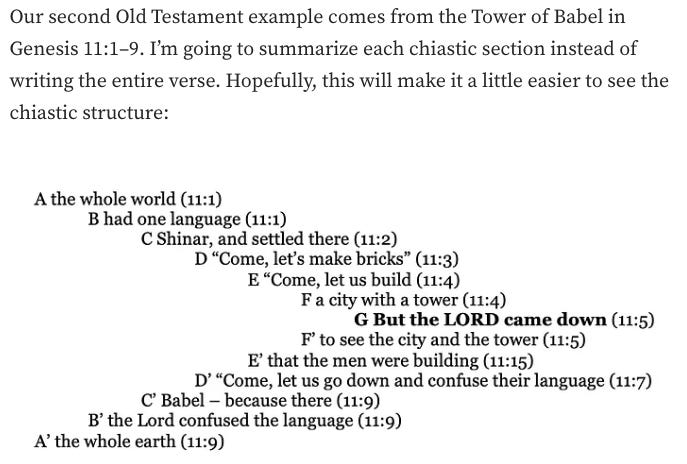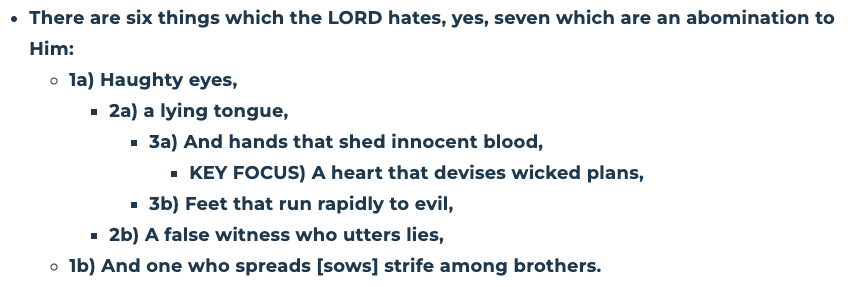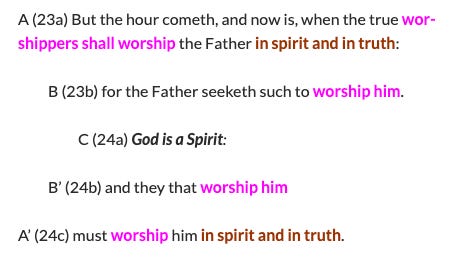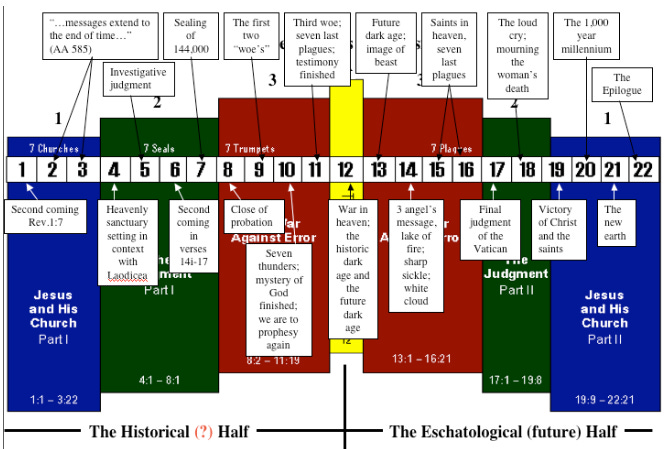Religious 13: Chiasms in the Bible
Eph 5:11:"…have no fellowship with the unfruitful works of darkness, but rather reprove them.”.
Amos 3:7 “…God will do nothing, but he revealeth his secret unto his servants the prophets.”
Why this post?
To show the remarkable integrity of chiastic writing.
Introduction
Before I continue unpacking the symbolism in Revelation I wanted to point out a specific literary style named “Chiasm”. I’ll explain it briefly, then provide a few examples and then elaborate those in Revelation.
What is it?
I got this straight from Claude 3:
Biblical chiasms, also known as chiastic structures or chiastic patterns, are a literary device found in ancient Hebrew literature, particularly in the Bible. The term "chiasm" comes from the Greek letter "chi" (χ), which is shaped like an "X" and represents the inverted parallel structure of this literary technique.
A chiasm is a rhetorical or literary pattern in which words, phrases, or concepts are arranged in a concentric, symmetrical manner, with the second part of the pattern mirroring the first part in reverse order.
The core of the message is in the middle.
Only in the Bible?
Straight from Claude 3:
No, chiasms are not found exclusively in the Bible. While they are prevalent in ancient Hebrew literature, including the Old and New Testaments, chiastic structures have been identified in various other literary works and across different cultures and languages.
Here are some examples of chiasms found outside of the Bible:
Ancient Greek and Latin Literature: Chiasms were used by ancient Greek and Latin writers, such as Homer, Herodotus, Cicero, and Virgil. For instance, in Homer's Iliad, there is a famous chiastic line: "The very same, their voice, their air" (αὐτῶν γὰρ σφετέρην φρένα τέρπει).
Ancient Indian Literature: Chiastic patterns can be found in ancient Indian texts, such as the Vedas and the Upanishads. For example, in the Brihadaranyaka Upanishad, there is a chiastic structure: "You are woman, you are man; you are the youth, you are the maiden; you are the old man tottering along on a staff."
Ancient Chinese Literature: Chiasms have been identified in ancient Chinese literature, such as the Analects of Confucius and the Daodejing. For instance, in the Analects, there is a chiastic saying: "The Master's Way is simply this: Loyalty and Reciprocity" (夫子之道, 忠恕而已矣).
Native American Literature: Chiastic patterns can be found in the oral traditions and literary works of various Native American tribes, including the Navajo, Hopi, and Zuni.
Modern Literature: Chiasms have been used by modern writers as well, including Shakespeare, Milton, and Dickens. For example, in Shakespeare's King Lear, there is a chiastic line: "Fair day, today, too, fair for our sport."
While chiasms are particularly prominent and significant in the Bible, this literary device has been employed across various cultures and time periods, indicating its widespread use and appreciation as a rhetorical and artistic technique.
It’s about the centre
The message is structured so that the most important message is located at the centre. The part leading up to it is a setup of the problem or how things were, the part that follows is the aftermath or solution to the initial problem.
JFK
I thought this one was interesting where JFK wrote about what man can do for country and Mark about man and the Sabbath:
Examples from the Old Testament
In Eden:
The flood:
And Babel:
Sinai and the Tabernacle:
Or Proverbs:
Examples from the New Testament
From John:
From Matthew:
Paul to the Ephesians:
Back to Daniel
Please consider this work of art:
On to Revelation
What then is the core message of Revelation?
whydoneit?
Why write this way?
This literary structure points to the core of the message AND, as a side benefit, we can have comfort in the accuracy of the translation.






